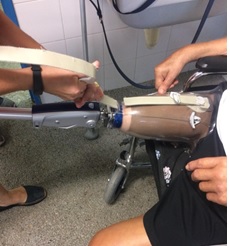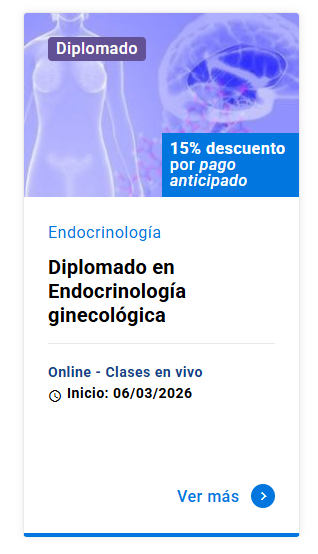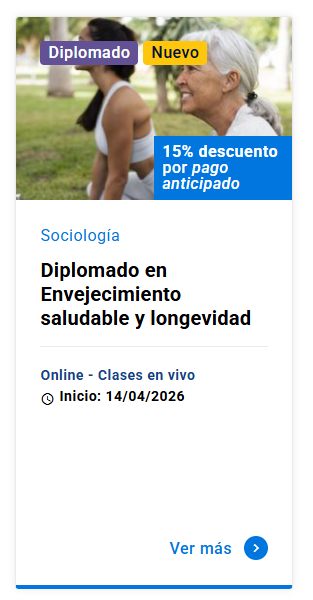Paciente con amputación transfemoral derecha, clavo gamma y síndrome hemimotor derecho: valoración y manejo del proceso de protetización.
Patient with a right transfemoral amputation, gamma nail, and right Hemi-motor syndrome: assessment and management of the prosthetic fitting.
DOI:
https://doi.org/10.11565/arsmed.v45i2.1630Resumen
Introducción la decisión de protetizar a un paciente amputado depende de: la etiología, nivel de amputación, uni o bilateralidad, comorbilidades, soporte sociofamiliar, capacidad funcional y motivación del paciente. Observación clínica varón, 83 años, diabético, cardiopatía isquémica, accidente cerebrovascular con paresia braquial derecha residual en año 2000. Clavo gamma por fractura pertrocantérea derecha en 2012 y amputación transfemoral derecha en 2018 de causa vascular. Se protetiza mediante encaje de contención isquiática CAT-CAM, sistema de suspensión tipo Kiss, rodilla de bloqueo a la extensión con adaptación del sistema de desbloqueo en porción antero-interna del encaje y pie Sach. Tras tratamiento fisioterápico, consigue deambulación autónoma con ayuda de un bastón y tercera persona por dificultad para agarre de MSD. Conclusión los médicos rehabilitadores debemos apostar por dotar a nuestros pacientes de autonomía y funcionalidad, siempre que sea viable.
Descargas
Citas
Cifu DX. (2015) Braddom’s physical medicine & rehabilitation. Elsevier.
Chamlian TR. (2014) Use of prostheses in lower limb amputee patients due to peripheral arterial disease. Einstein (Sao Paulo) 12, 440-446.
Czerniecki JM & Morgenroth DC. (2017). Metabolic energy expenditure of ambulation in lower extremity amputees: what have we learned and what are the next steps? Disabil Rehabil. 39, 143–51.
Eva Et T, Fagerdahl A-Mf AM, Blomgren LBl L, Boström Lb L, Ottosson Co C & Malmstedt Jm J. (2020). Risk factors for re-amputations in patients amputated after revascularization for critical limb ischemia. J Vasc 5214, 31084-3.
Gabel J et al. (2018). Analysis of Patients Undergoing Major Lower Extremity Amputation in the Vascular Quality Initiative. Annals of vascular surgery 46, 75-82.
Isakov E, Susak Z & Becker E. (1985). Energy expenditure and cardiac response in above-knee amputees while using prostheses with open and locked knee mechanisms. Scand J Rehabil Med Suppl. 12, 108-111.
Kelly BM, Spires MC & Restrepo, JA. (2007). Orthotic and prosthetic prescriptions for today and tomorrow. Physical medicine and rehabilitation clinics of North America 18, 785–858.
Klarich, J. & Brueckner I. (2014). Amputee rehabilitation and preprosthetic care. Physical medicine and rehabilitation clinics of North America 25, 75–91.
Lusardi MM, Jorge M. & Nielsen C. (2013) Orthotics and Prosthetics in Rehabilitation. In: Orthotics and Prosthetics in Rehabilitation. Elsevier H. 24, 652–84.
Mark D &Miller J HA. (2009) Rehabilitación: marcha, amputaciones, prótesis, ortesis y lesiones neurológicas. In: España. E, editor. Ortopedia y Traumatología: Revisión Sistemática. Fith. Elsevier;. p. 560–78.
Mengelkoch LJ, Kahle JT & Highsmith MJ. (2017) Energy costs and performance of transfemoral amputees and non-amputees during walking and running: A pilot study. Prosthet Orthot Int. 41, 484–91.
Periago RZ. (2013)Prótesis, ortesis y ayudas técnicas. Journal of Chemical Information and Modeling. 1689–1699.
Rodeiro MG. (2018) Guía de atención de pacientes amputados. Ministerio de Salud. Secretaría de Políticas Regulación e Instutos.;. p. 1–15. Accedido en https://www.argentina.gob.ar/inareps/guia-atencion-pacientes-amputados el 20 de marzo de 2020.
Saeed AB, Saeed UB, Zain-Ur-Rehman M, Ahmad Khan RD & Yasin, A. (2015). Factors affecting functional outcome after lower extremity amputation. JPMA. The Journal of the Pakistan Medical Association 65, S220–S224.
Stevens PM, Rheinstein J. & Wurdeman SR. (2018). Prosthetic Foot Selection for Individuals with Lower-Limb Amputation: A Clinical Practice Guideline. Journal of prosthetics and orthotics: JPO 30, 175–180.
Van Schaik L, Geertzen J, Dijkstra PU. & Dekker R. (2019). Metabolic costs of activities of daily living in persons with a lower limb amputation: A systematic review and meta-analysis. PloS one 14, e0213256.
Varma P, Stineman MG. & Dillingham TR. (2014). Epidemiology of limb loss. Physical medicine and rehabilitation clinics of North America 25, 1–8.
Wezenberg D, van der Woude LH, Faber WX, de Haan A. & Houdijk H. (2013). Relation between aerobic capacity and walking ability in older adults with a lower-limb amputation. Archives of physical medicine and rehabilitation 94, 1714–1720.

Descargas
Publicado
Cómo citar
Número
Sección
Categorías
Licencia
Derechos de autor 2020 ARS MEDICA Revista de Ciencias Médicas

Esta obra está bajo una licencia internacional Creative Commons Atribución-NoComercial-SinDerivadas 4.0.
Los autores/as conservan sus derechos de autor y garantizan a la revista el derecho de primera publicación de su obra, la que estará simultáneamente sujeta a la Licencia CC BY-SA 4.0 (Ver declaración de Acceso Abierto).







